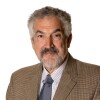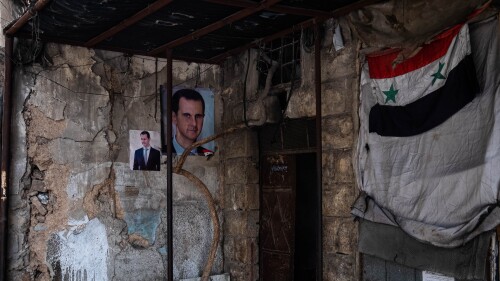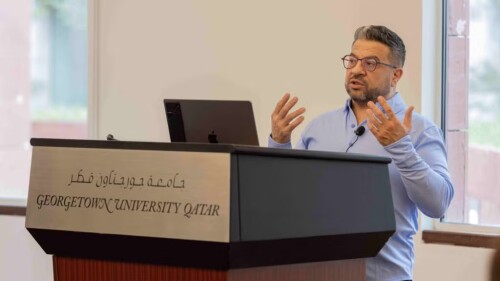Editor’s Note: Scroll down for the most recent updates to this ongoing blog post.
The Khalil Gibran International Academy is not the only taxpayer-funded Arabic-language school in the United States and not the only such school with Arabist and Islamist proclivities that must not be left unchecked. This weblog entry will explore other cases as they appear.
(This topic, incidentally, is quite apart from the private Islamic schools in the United States, which have problems of their own, and which I have covered in several articles, such as “A Madrassah in Bridgeview, Illinois,” “What Are Islamic Schools Teaching?” and “Troubles at Islamic Schools in North America."It is also distinct from the matter of regular public schools being under the control of Islamists, as appears to be the case at Fordson High School in Dearborn, Michigan, where the student body is 95 percent Arab.)
Tarek ibn Ziyad Academy, Inver Grove Heights, Minnesota, differs from KGIA in being a charter school, so it has more room to maneuver than a regular public school. But it shows alarming connections via its principal, Asad Zaman, to the Muslim American Society, the American branch of the Muslim Brethren, founded in Egypt in 1928 and perhaps the largest, most dangerous Islamist organization in the world.
Plus, the three-year old school has a distinctly Islamist tone, as Kevin Featherly reports in a Minnesota Monthly article, “Brothers’ Keeper":
a visitor might well mistake Tarek ibn Ziyad for an Islamic school. Arabic as a second language is mandatory. Headscarves are voluntary, but virtually all the girls wear them. There is a carpeted prayer space in the middle of the building that is similar, Zaman says, to spaces provided by several Minneapolis public schools. And there is the vaguely religious-sounding language used in the school. At one point, a conversation with Zaman is interrupted by the intercom: “Sister Zamia, please call the office. Sister Zamia, 2-2-1.” "[Muslims] refer to everyone as a ‘brother’ or a ‘sister,’ ” he explains. “We are all children of Adam.”
Boys in uniform khaki pants and girls in headscarves and modest dresses line up neatly to go to Arabic class. The mostly Somali class carefully circumnavigates the carpeted prayer area in the middle of the school as they follow a scarved teacher. Tarek girls aren’t required to wear hijab, or headscarves, but almost all do—they say they want to imitate their mothers or teachers. About half of the teaching staff is Muslim and wear hijab; the others are mostly Christian and dress modestly but with uncovered heads. During Ramadan, all the children follow the traditional dawn-to-dark fast, so there’s not so much temptation for each child, [parent Eman] Ibrahim said.
Fourth-grader Najma Ahmed says she feels more comfortable at Tarek ibn Ziyad Academy than at Highwood Hills in St. Paul, which she attended previously. She always had plenty of Muslim students to pray with there, but she likes that at Tarek almost all of her classmates are Muslim and many of her teachers are, too. …
About 1 p.m. every day, Tarek students stream out of classrooms, clean up in the restrooms, kneel down facing the east and begin to pray. Zaman says he doesn’t track students’ religion, but almost all children participate in the daily prayer. … The school’s calendar and day are set up to accommodate Muslim students. Classes break during the noontime prayer; vacation days are scheduled on Muslim holidays instead of traditionally Christian ones. The cafeteria is free of pork and other foods Islam prohibits.
The name of the school itself is also based in religion. General Tarek ibn Ziyad’s bloody battle marked the beginning of the Muslim rule of Spain in the eighth century. He famously burnt the boats his army used to cross the Mediterranean sea.
Aug. 24, 2007 update: With a reported waiting list of about 1,500 students, Tarek ibn Ziyad Academy has decided to expand beyond its Inver Grove Heights base and open a second Arabic-language school on Sept. 4 in Blaine, Minnesota, a northern suburb of the Minneapolis-St. Paul metropolitan area. “Parents in the north suburbs have been watching our progress over the last four years and suggested that we come to their neighborhood,” said Asad Zaman, Tarek ibn Ziyad Academy’s executive director. The Inver Grove Heights school has 375 students in K-8; the Blaine school will serve 75 students K-4 students initially and then add a higher grade each year; it will offer the same program, rules, and curriculum as the Inver Grove Heights original.
Carver Elementary School, San Diego, California, a kindergarten-through-eighth-grade institution, has had an Arabic program since September 2006, explains Helen Gao at “Legality of Arabic Class Questioned.” A teacher, Mary-Frances Stephens, told the school board yesterday about her experiences since being assigned to Carver on March 8: according to Gao,
she said she taught a “segregated class” of Muslim girls. She said she was given a lesson plan that included an hour for prayer. She alleged that a teacher’s aide led the prayer. Stephens told the school board, “What I saw is clearly a violation of administrative, legislative and judicial guidelines.”
July 2, 2007 update: The San Diego Unified School District investigated Mary-Frances Stephens’ allegations (that religious indoctrination was taking place in Carver Elementary School and that a school aide led Muslim students in prayer) and found them unsubstantiated.
July 27, 2007 update: The San Diego Unified School District may have rejected Mary-Frances Stephens’ allegations (see the July 2 entry), but it nonetheless had to change its practices, thereby substantiating her critique. Helen Gao writes at “Prayer OK at lunch, not classes at Carver” that “Carver Elementary’s schedule will be reconfigured so students can say their required midday prayers during lunch,” which is not a controversial time for praying in public American schools. In addition, the school will eliminate single-gender classes, Superintendent Carl Cohn indicated in a July 18 memo, because they have become “a serious distraction from learning rather than a vehicle to promote learning.”
Charlestown High School in Massachusetts is one of eight schools nationally to teach Arabic during the summer months, drawing on federal funds to do so. Although it pays obeisance to Arabic as “a national security priority,” of course, it has an Islamist component, namely a session at the notorious Islamic Society of Boston, as Tracy Jan reports in the Boston Globe:
On July 7, the students visited the Islamic Society of Boston, a mosque in Cambridge’s Central Square, where they sat in a circle on the carpet and learned about Islam from two mosque members. Peberlyn Moreta, 16, said she imagined that the women would be veiled head to toe, and was surprised to see only their heads covered. “I was afraid,” said Moreta, a junior at Charlestown High. “I didn’t want to offend anyone by the way I was dressed or by my cross.”
Moreta, a Catholic who tucked her gold cross under her T-shirt, felt comfortable asking the mosque members why they fast and why women cover their hair. She also asked them to demonstrate a prayer, and they obliged for several minutes, standing and bending and kneeling while reciting parts of a prayer in Arabic, then translating it into English. “It took the fear out of the whole stereotype I had in my mind from the things I see on the news,” Moreta said. “It’s been a real awakening.”
Across the hall, another group of students watched the film Divine Intervention, a 2003 comic tragedy about love on both sides of the Palestinian-Israeli border. They giggled at the repeated scenes of a Palestinian woman holding hands with her lover. But the students quickly turned somber when their teacher, Lama Jarudi, delved into why some people martyr themselves in suicide bombings.
International Academy of Columbus and Westside Academy, in Columbus, Ohio, are two charter schools set up by Islamists, as documented by Patrick Poole at FrontPageMag.com. The Islamists include (as Poole describes them):
- Ahmad Al-Akhras, CAIR national vice chairman.
- Abukar Arman, the Somali terror apologist who was recently forced to resign from the Central Ohio Homeland Security oversight board.
- Abdinur Mohamud, business partner of Al-Akhras and Arman who also is listed as director of the Ohio Department of Education’s Lau Resource Center.
In addition, Siraj Wahhaj, an unindicted co-conspirator in the 1993 World Trade Center bombing and an advocate of replacing the US Constitution with shari’a law, attended fundraisers of the Islamic school associated with these two charter schools.
Poole then surveys the content of the education the schools offer:
Extremist politics, rather than education concerns, seems to be the driving factor of the schools. One of the leaders of the two schools admits to creating a program designed to keep students from integrating into the “racist” American mainstream. In a published education article, “Educating Immigrant Youth in the United States”, Abukar Arman and his co-author lay out an educational plan of keeping Somali children from integrating into their new culture, and cite the experience of International Academy as the best example of their recommended “selected acculturation” educational philosophy in practice.
An appeal to readers brought not just several other public-funded Arabic-language schools in the United States to my attention, but also two overtly Islamic schools:
Islamic School of Oasis, Cleveland, Ohio, a taxpayer-funded voucher school. Unlike the other schools considered here, where one has to look around to find the Islamic agenda, it stares one in the face at Oasis, as Time magazine indicated in a 1999 visit:
“Are you afraid of the Judgment Day?” Sister Mira Anne Nattoli, clad in traditional Muslim robes, asks her fifth- and sixth-grade English class. Today’s text is “The Twins and the Missing Math Paper,” but the lesson is as much religion as English. “Whoever cheats,” a young man reads carefully, “is not a good student of Islam.” The students, about 95% African American, wear loose-fitting shirts and headdresses—skullcaps called kufis for the boys and scarves called khimars for the girls. Cleveland’s Islamic School of Oasis is in many ways a typical Muslim day school, but with a twist. Tuition for more than half its students is paid by Cleveland, Ohio, taxpayers.
The Islamic School of Oasis … requires prayer: Zuhr, a short service, four days a week, and the longer Jumah service on Fridays. The posters here have an Islamic theme, like the MUSLIM CHILD’S ALPHABET, in which each letter has a Muslim reference: A is for Allah and Q is for Qu’ran. “We started as a religious school because the rights of Muslims were not being protected in the public schools,” says principal Da’ud Abdul Malik. Before vouchers, about three-fourths of the student body was Muslim. Now, a majority is non-Muslim. But … the religious requirements apply to all.
Islamic Academy School of Arts and Sciences, Cleveland, Ohio, another taxpayer-funded voucher Islamic school, came to public attention when news came out that it had bilked the government for phantom students and had to shut down. As Americans United for Separation of Church and State explained in March 2000,
A state audit found last year that the Islamic Academy School of Arts and Sciences had received $70,000 from the state by claiming to have enrolled students who were in fact not attending the institution. The school, which also had a convicted murderer on staff, shut down in the wake of the disclosures. State Auditor Jim Petro later issued a report saying that the Academy owes the state $69,967 for voucher payments it received for non-existent students. The Academy also billed the state $11,723 for utility bills and $5,250 in taxi fares to transport the fictitious students.
An unannounced visit to Silicon Valley Academy by The Chronicle last week found Korans in the principal’s office, along with children’s picture books titled My Little Qur’an. Students reported studying Islam in class and praying with their teachers. The academy appeared to operate like a private religious school, and parents picking up their children in the school parking lot said they thought it was. In the principal’s office, decorated with pictures of Mecca, parents wrote tuition checks. And the school’s Web site promised to provide instruction and moral values based on dedication to Allah.
Iris Becker Elementary School, Dearborn, Michigan. The school has received federal funding via the National Security Language Initiative. But I find no articles on it or other in-depth information to figure out if problems exist here or not. (August 29, 2007)
Sep. 5, 2007 update: I published a column today, “Teach Arabic or Recruit Extremists?” that surveys taxpayer-funded pre-collegiate Arabic-language instruction in the United States – other than the Khalil Gibran International Academy. In almost every case I have found, politics and religion pollute what should be a sterile environment. As Martin Kramer notes to me, “The fact is that every form of Arabic instruction involves risk: K-12, university level, immersion overseas.” The sooner educational administrators accept this unpalatable fact, the better and faster we can begin to equip Americans with knowledge of this language.







